Top speed 810 km/h Wingspan 35 m | Length 36 m First flight March 7, 1975 | |
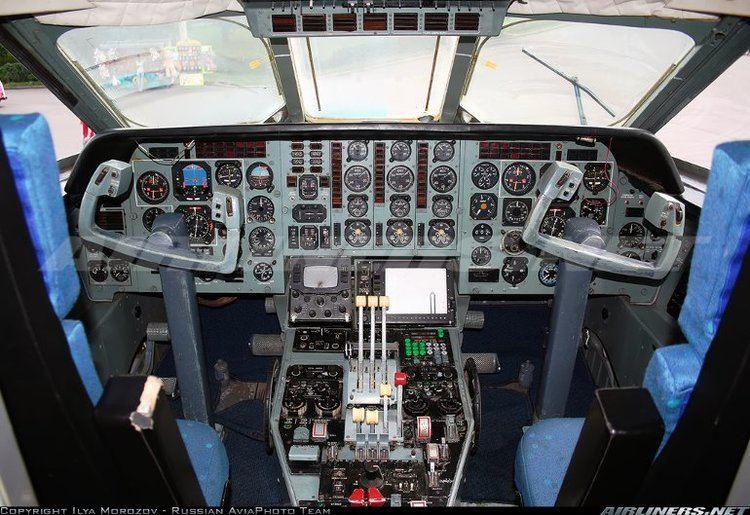 | ||
Number built 185 (as of 1 January 1995) Manufacturers | ||
Saratov airlines saravia yakovlev yak 42 saratov to moscow dme airclips full flight series
The Yakovlev Yak-42 (NATO reporting name: "Clobber") is a 100/120-seat three-engined mid-range passenger jet. It is the first airliner produced in the Soviet Union to be powered by modern high-bypass turbofan engines.
Contents
- Saratov airlines saravia yakovlev yak 42 saratov to moscow dme airclips full flight series
- Rusjet yakovlev yak 42 landing at salzburg airport szg lows
- Design and development
- Testing
- In service
- Variants
- Operators
- Accidents and incidents
- Specifications Yak 42D
- References
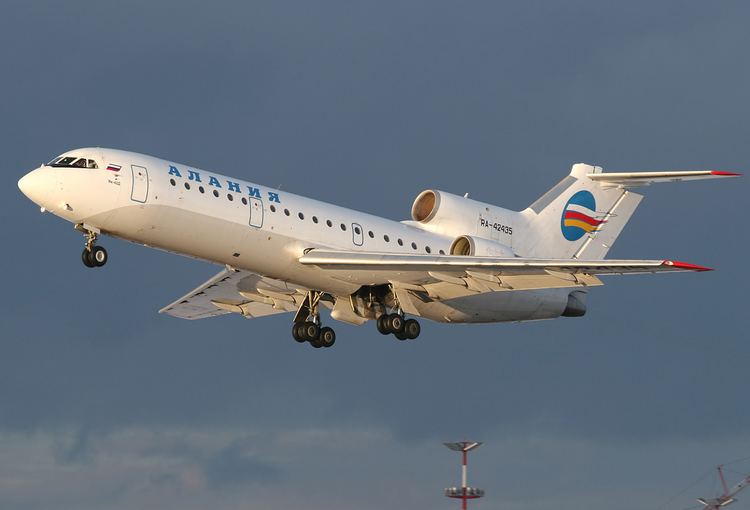
Rusjet yakovlev yak 42 landing at salzburg airport szg lows
Design and development

In 1972, the Yakovlev design bureau started work on a short- to medium-range airliner capable of carrying 100–120 passengers. It was intended to be a replacement for the Tupolev Tu-134 jet as well as the Ilyushin Il-18, Antonov An-24 and An-26 turboprop airliners. While the new airliner was required to operate out of relatively small airfields while maintaining good economy, as many Soviet airports had been upgraded to accommodate more advanced aircraft, it did not have to have the same ability to operate from grass strips as Yakovlev's smaller Yak-40. The requirement resulted in the largest, heaviest and most powerful aircraft designed by Yakovlev so far.
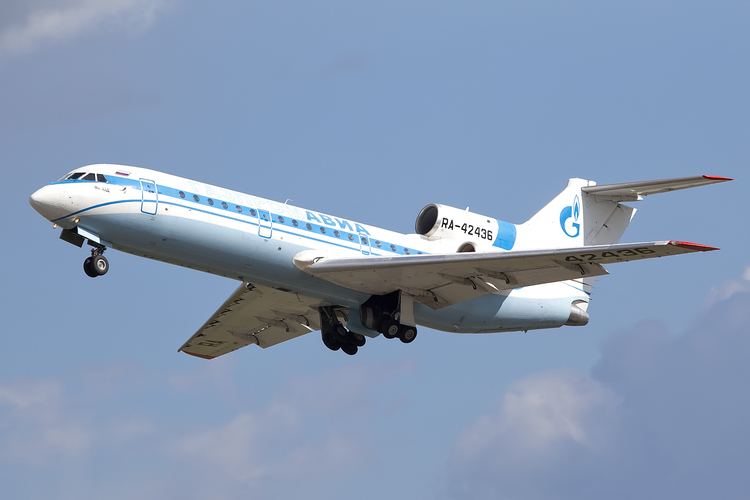
Initial design proposals included a straight-wing airliner powered by two Soloviev D-30 turbofans and resembling an enlarged Yak-40, but this was rejected as it was considered uncompetitive compared to Western airliners powered by high bypass ratio turbofans. Yakovlev settled on a design powered by three of the new Lotarev D-36 three-shaft high-bypass turbofans, which were to provide 63.90 kN (14,330 lbf) of thrust. Unlike the Yak-40, the new airliner would have swept wings.
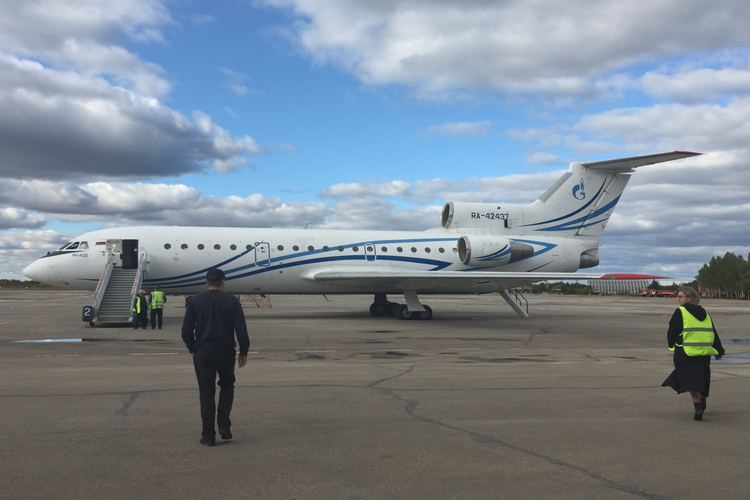
The Yak-42 is a low-winged monoplane of all-metal construction, with a design lifespan of 30,000 one-hour flights. It has a pressurised fuselage of circular section, with the cabin designed to carry 120 passengers in six-abreast layout (or 100 passengers for local services with greater space allocated to carry-on luggage and coat stowage). The aircraft is flown by a flight crew of two pilots sitting side by side in a flight deck forward of the cabin. Access is via two airstairs, one in the underside of the rear fuselage, like that of the Yak-40, and one forward of the cabin on the port side. Two holds are located under the cabin, carrying baggage, cargo and mail.
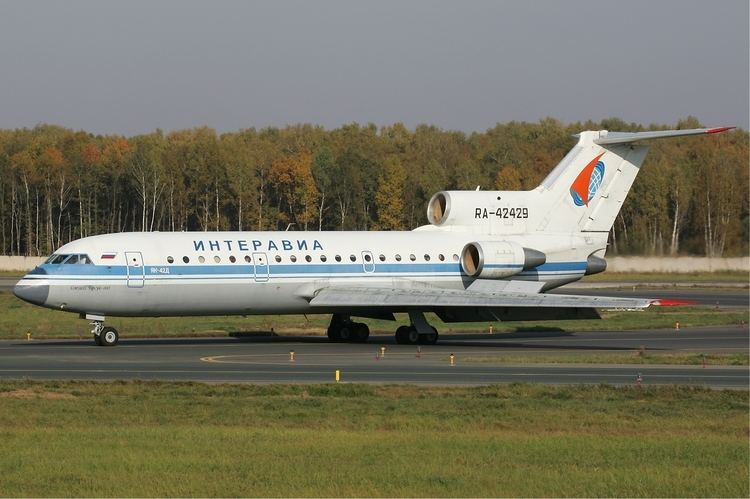
The wing layout underwent considerable revision during the design process, with the first prototype being built with a wing sweep of 11 degrees and the second prototype with a sweep of 23 degrees. After evaluation, the greater sweep of the second prototype was chosen for production. Early aircraft had a clean wing leading edge with no control surfaces, and plain trailing edge flaps. This changed in later aircraft, which were fitted with leading edge slats, with the trailing edge slats slotted.
Two engines were mounted in pods on either side of the rear fuselage, with the third embedded inside the rear fuselage, fed with air via an "S-duct" air inlet. An auxiliary power unit (APU) is also fitted in the rear fuselage. No thrust reversers are fitted. The aircraft has a T-tail, with both the vertical fin and the horizontal surfaces swept.
Testing
The first of three prototypes, which was fitted with an 11-degree wing and registered CCCP-1974, made its maiden flight on 7 March 1975. It was followed by the second prototype, (CCCP-1975) with the 23-degree wing and a cabin with 20 rows of windows instead of 17 in the first prototype, and a third prototype (CCCP-1976) fitted with improved de-icing gear.
In service
The first production aircraft was completed on 28 April 1978, with the first scheduled passenger flight, on the Aeroflot Moscow-Krasnodar route taking place on 22 December 1980. Production was at first slow, with only 10 flown by mid-1981. Initial aircraft were fitted for 120 seats in a three-plus-three arrangement. This was soon changed to a first class section with two-plus-two seating, and a main cabin with 96 seats, giving a total of 104 seats.
In its first year of operation Aeroflot's Yak-42s carried about 200,000 passengers, mainly on routes from Moscow, but also on international services from Leningrad to Helsinki and from Donetsk to Prague, with the type being planned to enter wider service throughout the Aeroflot fleet. On 28 June 1982, however, the tailplane detached from an Aeroflot Yak-42 in flight owing to a failure of the actuator screw jack, causing the aircraft to crash fatally near Mazyr. The type was grounded as a result, not returning to service until October 1984.
An export order for seven aircraft was announced in 1982 by Aviogenex of Yugoslavia, but the contract lapsed. The availability of the longer-range Yak-42D variant from 1991 onwards gave rise to a few more export sales, to Cuba and China. As of 1 January 1995 a total of 185 Yak-42 had been produced, including 105 Yak-42D.
Variants
Original production version. Max. takeoff weight 54,000 kg (119,050 lb).
Version with modified avionics for use on international use (mezhdunarodnyye linii – international services). Entered service in July 1981 on the Leningrad-Helsinki route.
Long-range version (Dahl'niy – long range) increased fuel. Replaced standard Yak-42 in production.
Derivative of Yak-42D with updated, western AlliedSignal avionics, spoilers to allow faster descent and enlarged cabin door to accommodate jet bridge. Also designated Yak-42A, Yak-42-100 and Yak-42D-100.
Yak-42 used as testbed for radar for Yakovlev Yak-141 fighter.
Conversion of a Yak-42 for geophysical survey and environmental monitoring. Fitted with large underwing pods containing electro-optical sensors.
Conversion as testbed for Progress D-236 propfan engine. Single D-236 (rated at 8,090 kW (10,850shp)) mounted in place of starboard engine, on special pylon to give sufficient clearance for 4.2 m (13 ft 9¾ in) propellers. First flew 15 March 1991.
A projected but unbuilt stretched airliner. Planned to be powered by three Progress D-436 turbofans, a stretched fuselage and new wings. Design developed into Yak-242.
Further developed Yak-42M, with two underwing Aviadvigatel PS-90 turbofans. Design evolved into Irkut MC-21.
Operators
As of July 2015, 34 Yak-42s remained in commercial airline service. Operators are Grozny Avia (8), Izhavia (7), Saravia (7), KrasAvia (5), Gazpromavia (4) and Tarco Airlines (3).
Accidents and incidents
As of 2 February 2016, nine Yak-42 fatal accidents occurred with a total of 570 casualties.
Specifications (Yak-42D)
Data from Brassey's World Aircraft & Systems Directory 1999/2000.
General characteristics
Performance
